2024 Sea-Doo Spark Trixx Review
The Trixx gets a little more trixxier
Engine: Three-cylinder 899cc
Fuel Capacity: 7.9 gal.
Stowage Capacity: .71 gal.
Seating Capacity: 1
MSRP: Starting at $9,099
It may seem hard to believe but an entire decade has passed since Sea-Doo unveiled the Spark, a craft that broke the mold both literally and figuratively in the personal watercraft market.
Literally it changed PWC hull construction, swapping out fiberglass-based methods for a proprietary blend of polypropylene reinforced with long-strand glass fibers that was lighter than the norm, traded glossy shine for a matte finish and cost less to produce. It also proved that a surprisingly low horsepower engine could still be a lot of fun in a lightweight hull thanks to good ol’ horsepower-to-weight ratio.
As to the figurative breaking of the mold, it went the opposite direction from the increasingly larger craft that ruled the market. It also knocked thousands off of the typical PWC’s price tag, coming in that first year at a mere $4,999.
As to the rest of the story, it sold like hotcakes, appealed to a lot of younger or sportier riders who found the craft’s playful hull was a natural at freestyle, and was ultimately spun off into the ultimate showman’s ride — the Sea-Doo Spark Trixx. The Trixx spun, it hopped, and it performed wheelies. So…many…wheelies.
How to mark the Spark’s 10-year anniversary? Try a new and improved Spark, and a Trixx that gets a little more trixxier.
Sleeker, Cooler…And More Forgiving
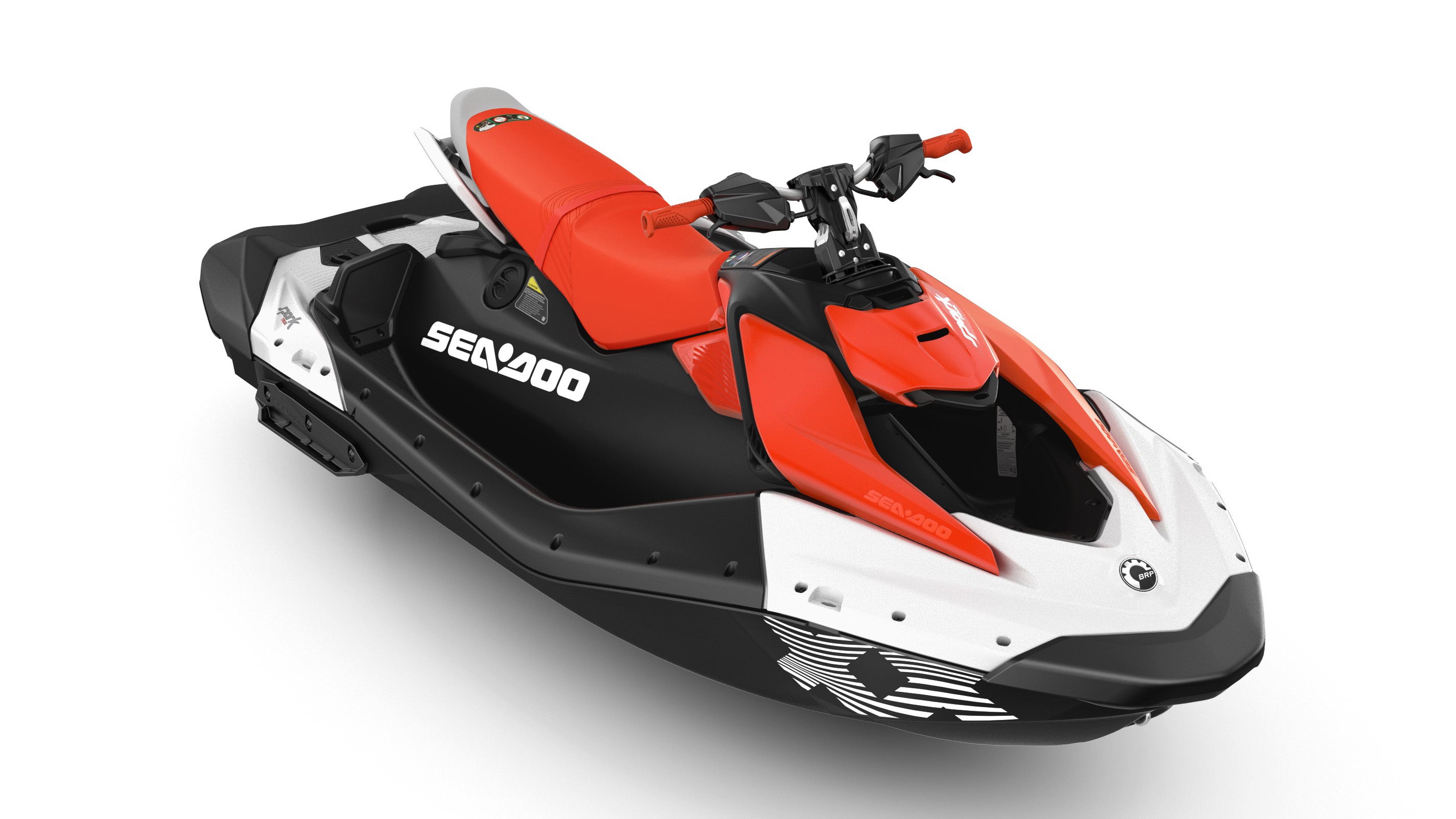
The basic design hasn’t changed. The craft still has the same diminutive stature, wishbone-like open bow structure and playful color combos. Look closer, however, and everything is just a little softer. Hard edges are replaced by smoother corners, and blunted areas seem to have almost elongated. It definitely looks more modern, but there’s a lot of function below that form. Learning tricks means more than a share of falls along the way. This more forgiving Trixx promises a few less bumps, bruises and expletives when they do.
The sleeker aft deck also promises to be easier to climb back aboard after the eventual dunking. Yes, I found out quickly it’s still not the simplest task, but the flip-down boarding step offers some leverage and new integrated handholds are placed right where you need them. Aboard you’ll also note that both deck and footwells feature a new, more comfortable texture for increased traction. And then there’s the seat. Once a simple design that felt about as comfortable as a sawhorse at times, it’s now a broader, solo-passenger saddle that, unlike the original still found on its three-passenger sibling (don’t buy that one if you’re a real trickster as the added length limits its freestyle potential), doesn’t get in the way as a rider scampers backward to do tricks, shift weight, or climb aboard after a dunking.
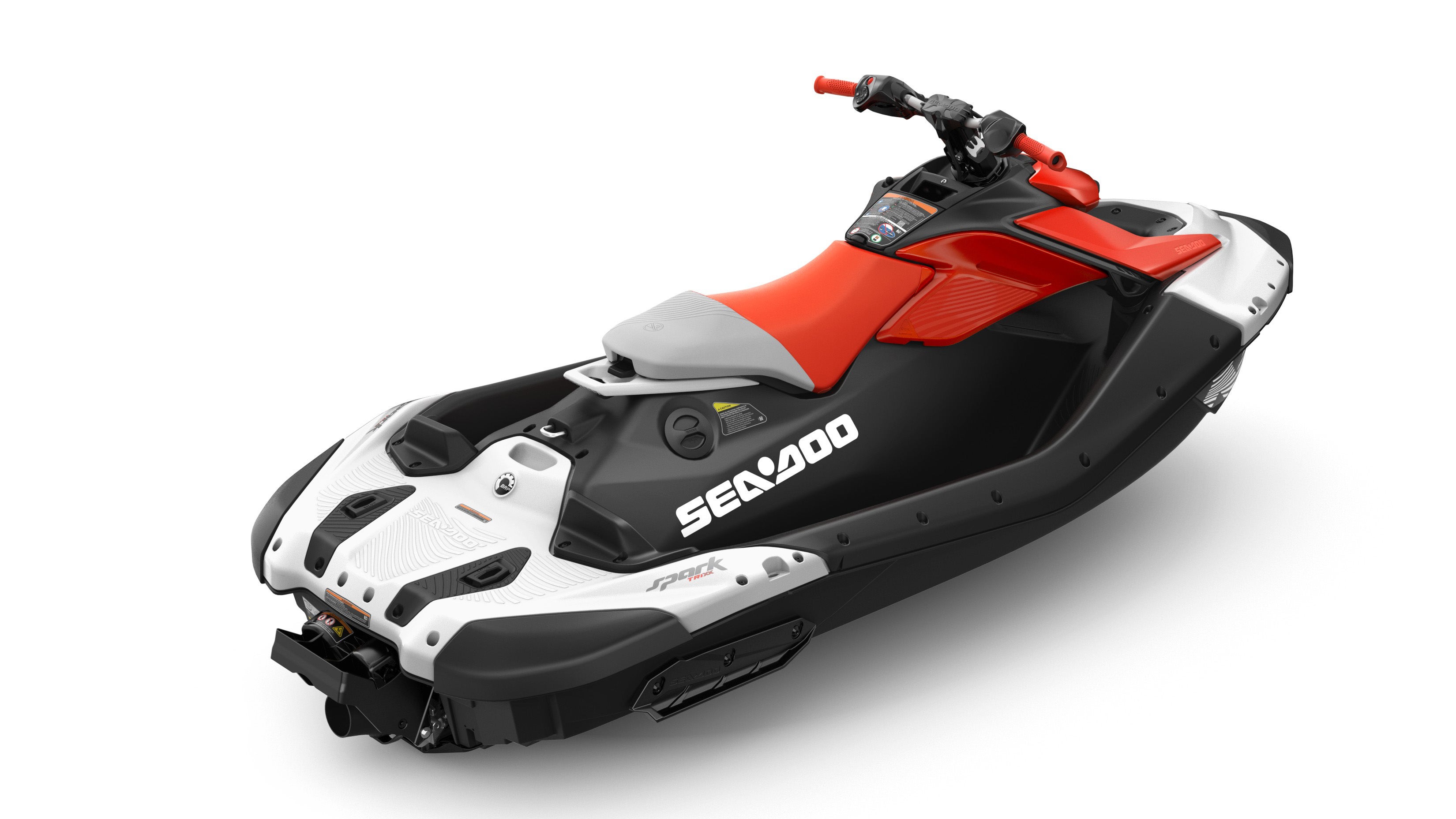
As to the footwell chocks that the Trixx has always featured at the back of the footwells for added leverage, they too have been redesigned. Though still a separate part, they seem larger and better integrated into the design.
The Trixx Makers
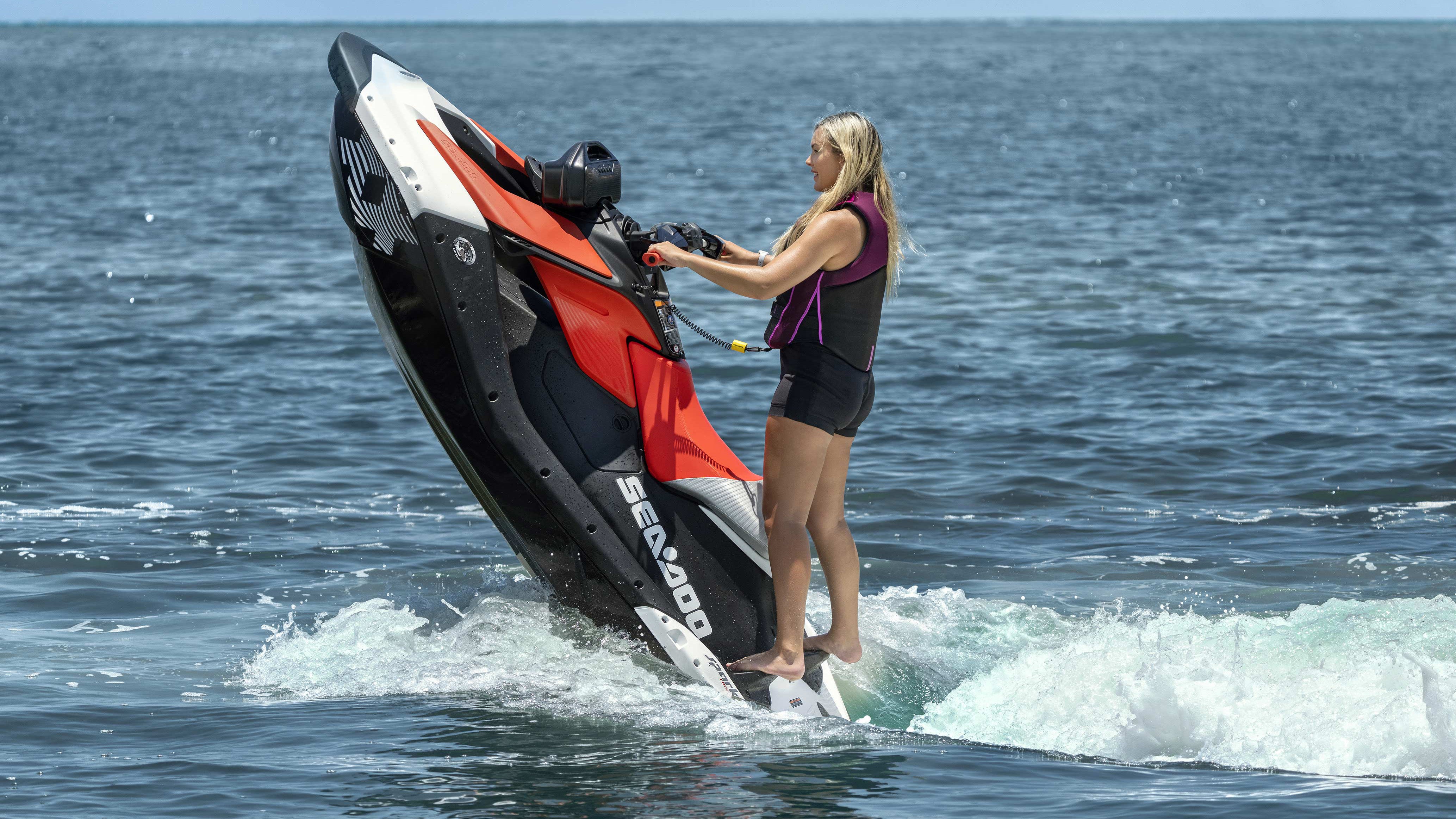
Those footwells are part of the original trio of features that have longed separated the Trixx from the regular Spark. The other two include the craft’s extended range variable electric trim and extendable handlebars. The former lets the thrust nozzle pivot higher than the norm, pushing the bow naturally skyward. The latter extends the handlebars upward and provides the rider with more leverage over the bow. Combine both and step back onto those footwell chocks and you can pull the Trixx into that coveted wheelie…and hold it there with a little finesse. It’s also fairly easily to transition that wheelie into a whirly tailspin like a standup freestyler of old. Hint for those having trouble? Make sure you’re in Sport, rather than Touring mode so the engine has a little more punch. Smaller riders may also benefit from spinning the hull out into a 180 spin, that stepping back onto the chocks as the boat settles at the stern.
New trick potential has been added for 2024. A tweaked reverse bucket design pairs with a new Trixx mode (added to the existing Sport, Touring and ECO settings) to give the craft a few new moves. Trixx mode bumps up acceleration slightly to pull that nose up when wheelie-ing. It also provides a more powerful response in reverse, working with the new reverse bucket design to usher in new tricks like reverse donuts or mini bow submarines.
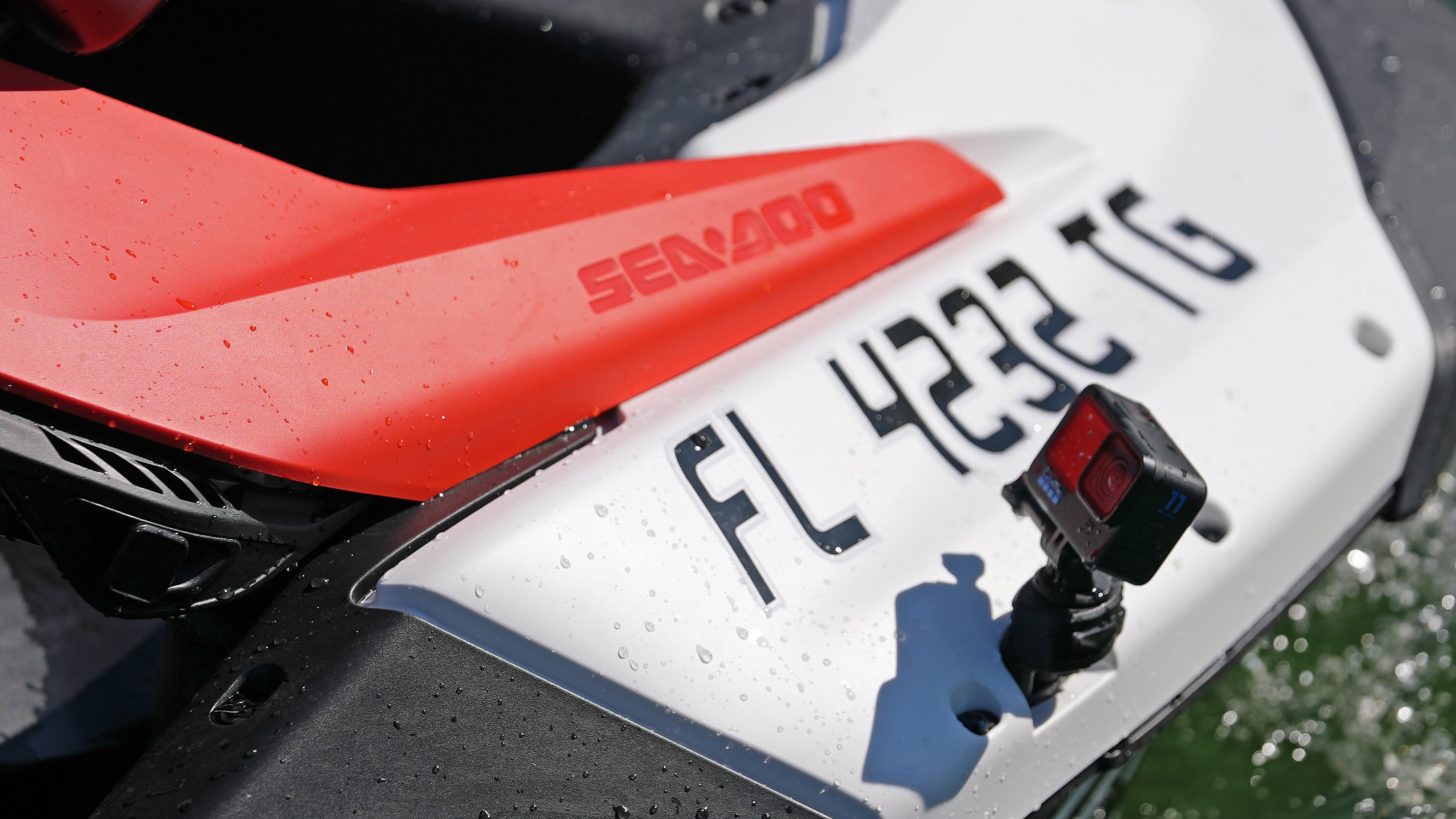
Other improvements include no less than five LinQ Lite mounts around the perimeter deck rail and on the bow, designed to accommodate GoPros and capture almost every angle of your best moves; a better mount for the optional Bluetooth boom box (itself now redesigned and offering two different modes for rider-directed sound on the water and more overall sound quality at beach or dock); the adoption of the full-size control modules of the RXP-X and GTR-X on the skeletal handlebars; slightly larger glovebox with waterproof phone compartment; and a larger 4.5” info display.
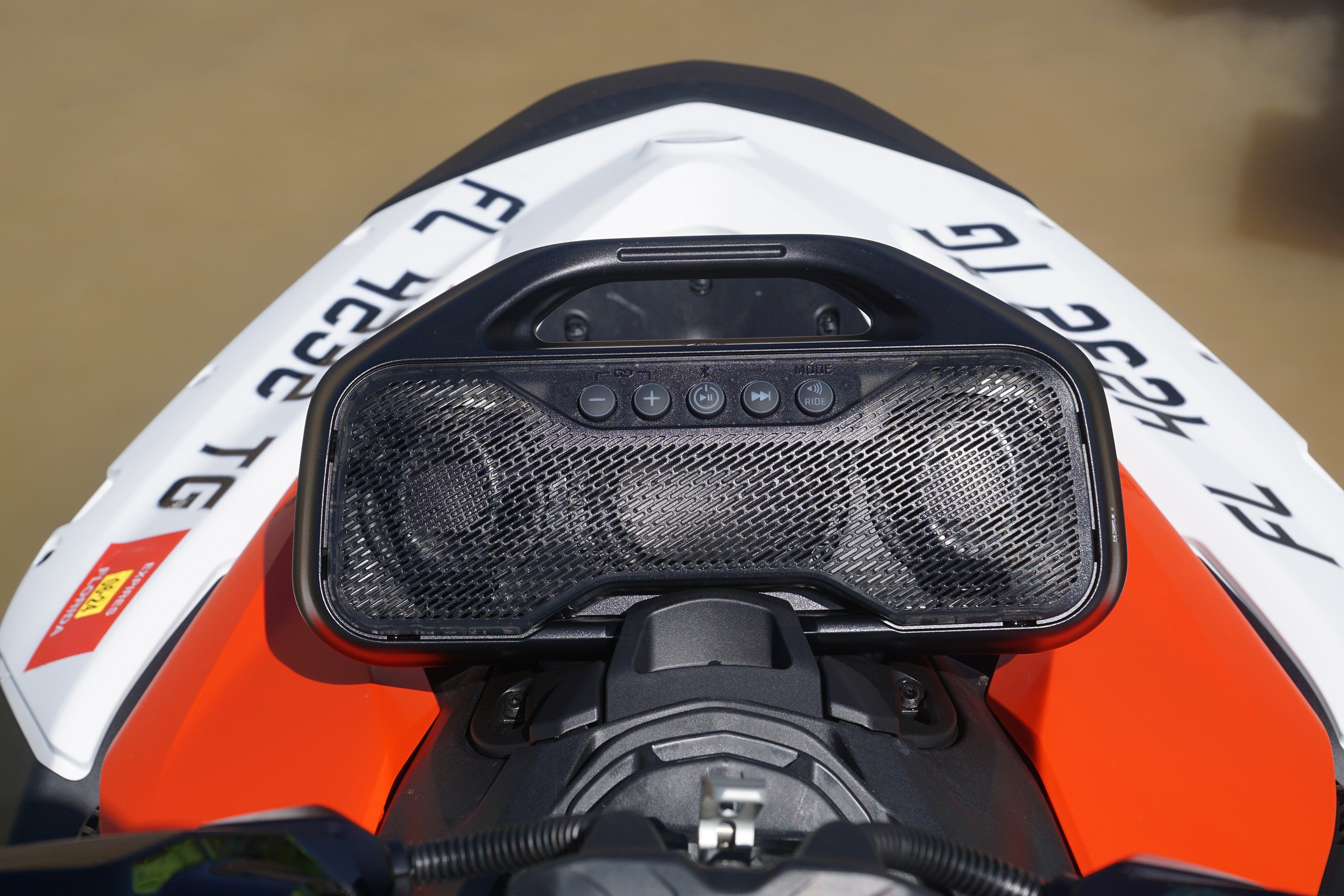
Strength Comes From The Core
Of course, within remains that original lower-horsepower engine that made news back in 2014. An 899cc, Rotax ACE 900, it produces 90 hp and, as mentioned, can be tamed with Touring mode. But like I alluded to earlier, go Sport or go home. The Trixx comes alive when the engine’s full potential is on tap, so why limit the fun. Top speed? A respectable 55 mph.
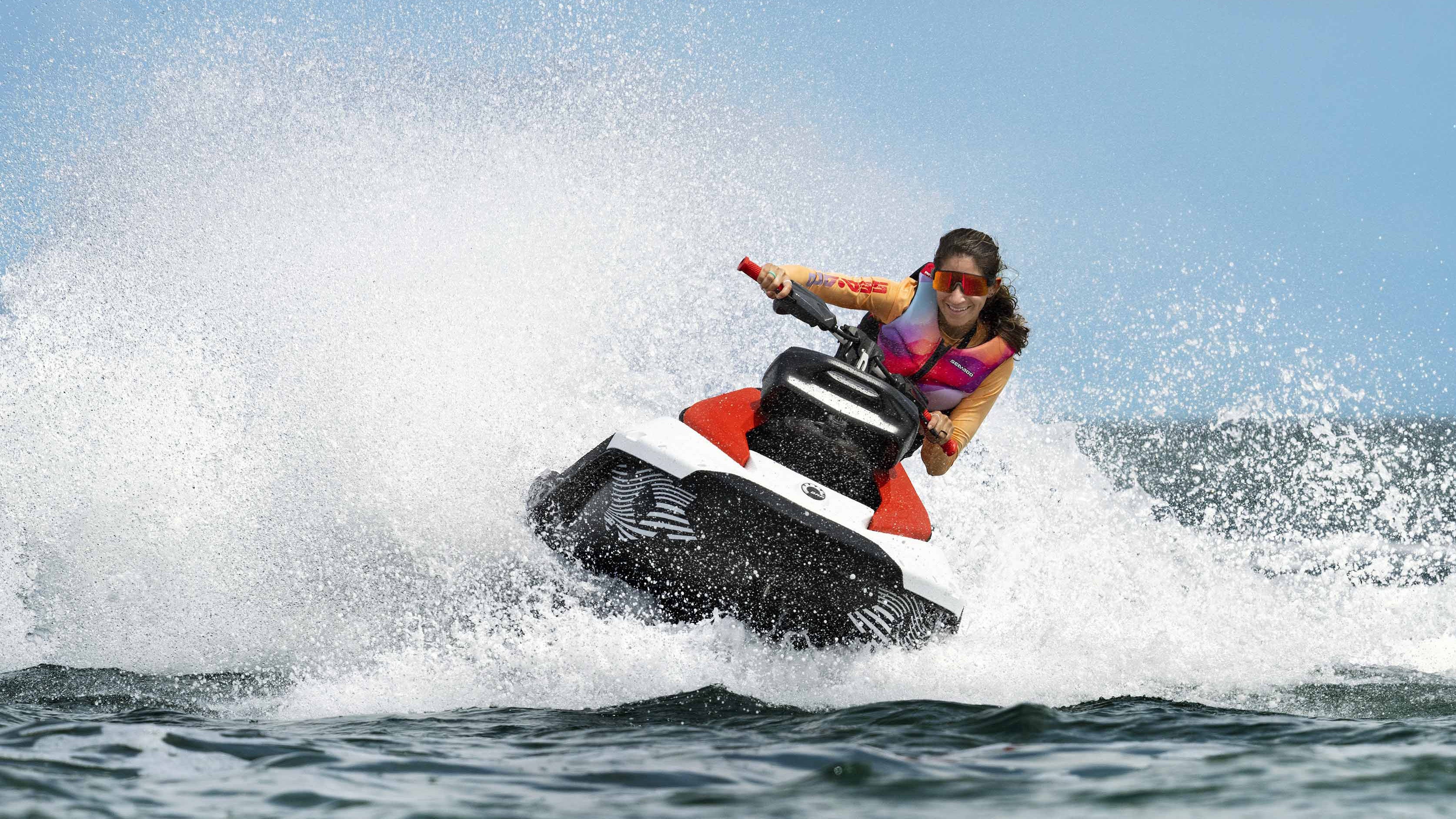
As to other core features, Intelligent Brake & Reverse gives the boat intuitive manners around those tight dock areas, easily moving in and out of forward/reverse/neutral while keeping hands on the handlebars and eyes on the water. Apply it at speed to brake the craft and rapidly decelerate.
As to core competition, Yamaha’s JetBlaster remains the only real contender. In many ways it’s the more versatile craft, a three-seater with a better standing in rough water, better speed, minimal but standard storage (the Spark requires an add-on compartment that fills that cool empty space below the wishbone up front), and greater fuel capacity. It’s more of an aggressive ride, however, and lacks the Trixx’s outright playfulness.
I could also point out that only one of the two craft can stand up on its tail…but that would be a dirty trixx.
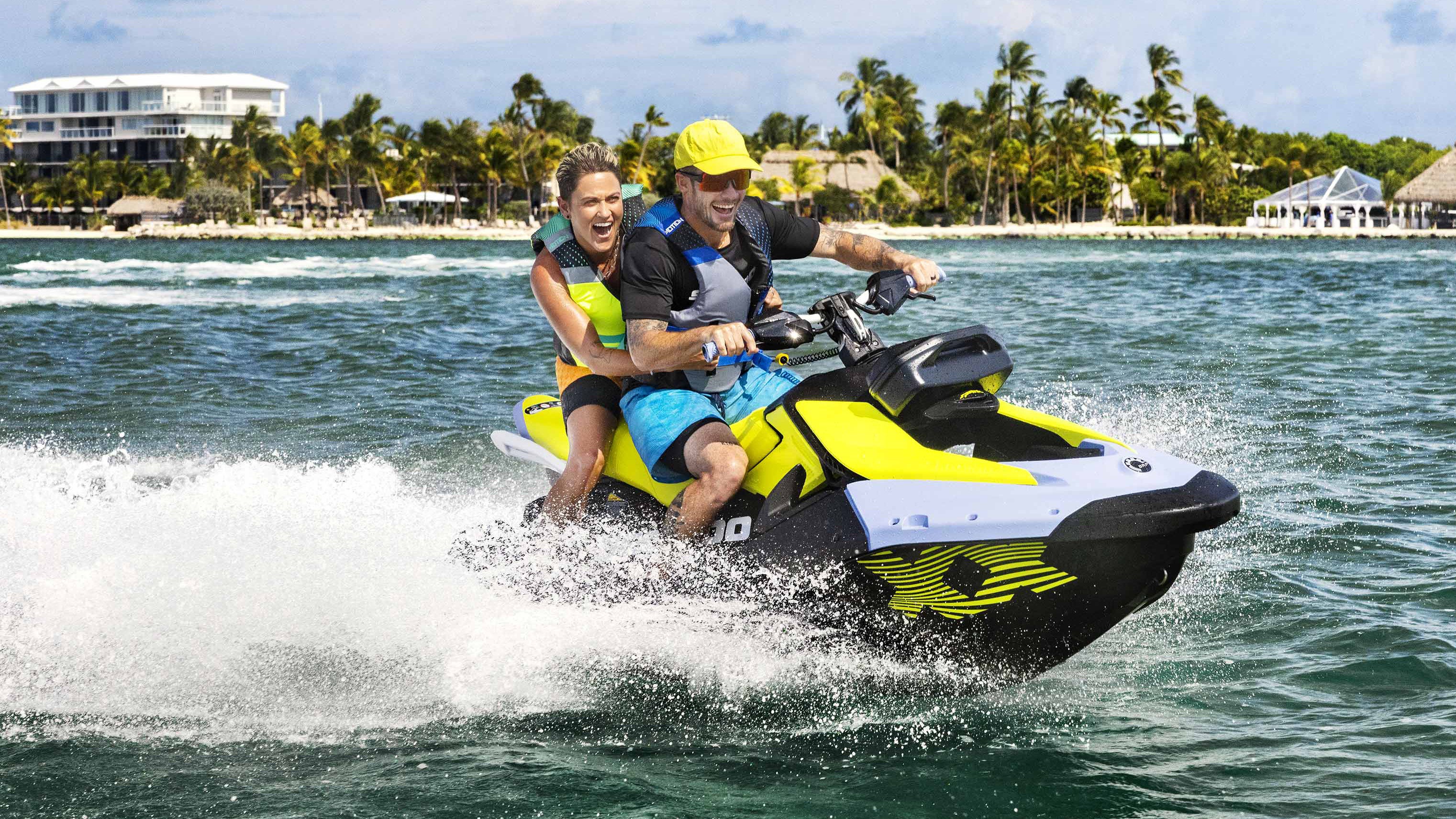
Get PersonalWatercraft.com in your Inbox!
Like PersonalWatercraft.com on Facebook
Comments
Most Popular

2025 Yamaha JetBlaster PRO 2-Up Review

Remembering the Sea-Doo XP

2024 Kawasaki Jet Ski STX 160X Review

Whatever Happened to the Wetbike?

2025 Yamaha JetBlaster Review




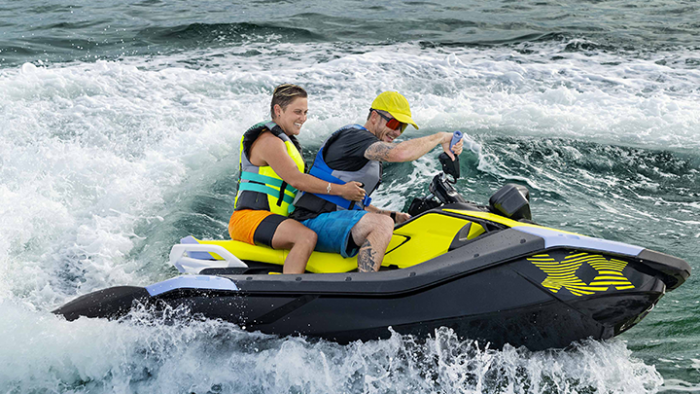

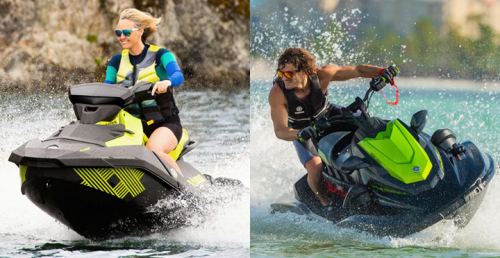
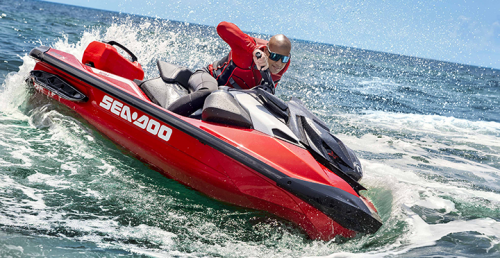






 Your Privacy Choices
Your Privacy Choices